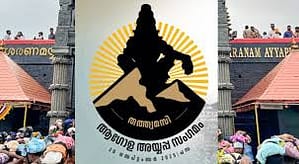India had lost a golden opportunity to teach Pakistan a lesson during the operation Sindoor due to it succumbing to external pressure in abruptly accepting a ceasefire. It should have inflicted more damage to Pakistan’s military installations before conceding to a truce.
Exponews International desk.
While the Indian government chose to play its cards close to its chest when it comes to the losses suffered during the recent conflict with Pakistan, the India Chief of Defense Staff, Anil Chauhan has told Bloomberg TV that India lost an unspecified number of fighter jets in the clashes with Pakistan last month. He, however, denied Pakistan’s claim that they shot down six Indian warplanes. Anil Chauhan further clarified that the conflict never came close to nuclear war, and “that channels of communication with Pakistan were always open to control the situation.”
Speaking to Bloomberg TV on Saturday while atending the Shangri-La Dialogue in Singapore, Anil Chauhan called Pakistan’s claims that it shot down six Indian warplanes as “absolutely incorrect,” though he declined to specify how many jets India lost.
India lost some fighter jets on the opening day of the recent military confrontation with Pakistan due to initial restrictions imposed by the government on striking Pakistani military establishments, and the orders were to hit only terror infrastructure in that country, India’s defence attache to Indonesia said at a seminar in Jakarta.
The navy officer said India changed tack after the initial air losses to completely dominate Pakistan. His hitherto unreported comments at the June 10 event were in response to claims made by an Indonesian aerospace expert that the Indian Air Force (IAF) lost five fighter jets — including three Rafales, one MiG-29 and a Sukhoi-30 — a tactical drone and Pakistan degraded two S-400 launchers during Operation Sindoor, India’s direct military response to the April 22 Pahalgam terror strike.
“I may not agree with him that India lost so many aircraft. But I do agree that we did lose some aircraft and that happened only because of the constraint given by the political leadership to not attack the military establishments and their air defences,” Captain Shiv Kumar, a navy officer, said. A navy captain is equivalent to a colonel in the army. He described how India changed tack after the initial air losses to completely dominate Pakistan. “After the loss, we changed our tactics and went for their military installations. We first achieved suppression of enemy air defences and destruction of enemy air defences (known as SEAD and DEAD in military parlance) and that’s why all our attacks could easily go through using surface-to-air missiles and surface-to-surface missiles…On May 8, 9 and 10, there was complete air superiority by India,” he said.
“No military installations, no civil installations…Nothing which was not connected to terrorists was to be targeted,” he said at the seminar on Analysis of the Pakistan-India Air Battle and Indonesia’s Anticipatory Strategies from the Perspective of Air Power.
India launched Operation Sindoor in the early hours of May 7 and struck terror and military installations in Pakistan and Pakistan-occupied Kashmir (PoK) following the Pahalgam terror strike in which 26 people were shot dead. It triggered a four-day military confrontation with Pakistan involving fighter jets, missiles, drones, long-range weapons and heavy artillery before the two sides reached an understanding on stopping all military action on May 10.
India lost three Rafale fighter jets because of “vulnerabilities exposed due to AWACS (airborne warning and control systems) disconnection,” claimed Tommy Tamtomo, vice-chairman, Indonesia Center for Air Power Studies. “India lost a lot, but Pakistan also lost a lot. Maybe more than India,” he said at the seminar.Pakistani air losses included six fighter jets, two AWACS aircraft and a military transport plane, Tamtomo said.
Speaking at the Pakistan-Turkiye-Azerbaijan Trilateral Summit at Lachin in Azerbaijan, Pakistan PM Shehbaz Sharif admitted that India’s BrahMos missile strikes on the intervening night of May 9-10 thwarted Pakistan’s planned military offensive. He stated that Pakistan planned to attack India in the early hours of May 10, just after the Fajr prayers, but India had already struck multiple provinces across Pakistan by that time. The Indian Armed Forces carried out targeted missile strikes under Operation Sindoor on nine terrorist facilities, four in Pakistan and five in Pakistan-Occupied Kashmir.
“On the night of 9-10 May, we decided to respond in a measured fashion to Indian aggression. Our armed forces were prepared to act at 4.30 in the morning after Fajr prayers to teach a lesson. But before that hour even arrived, India once again launched a missile attack using BrahMos, targeting various provinces of Pakistan, including the airport in Rawalpindi,” Sharif said during his speech.














